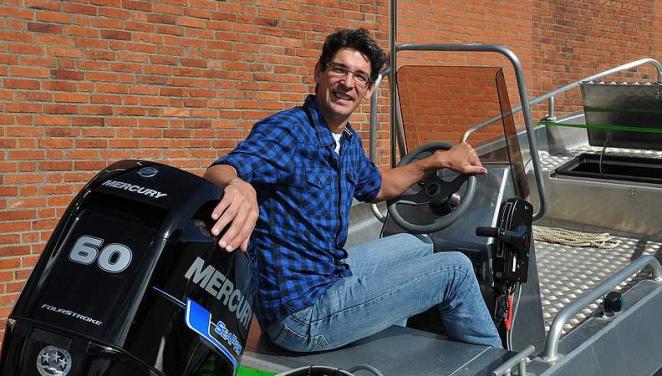Marine species are particularly vulnerable to noise pollution, as they rely heavily on sound for navigation and communication. Understanding how noise pollution affects marine mammals, fish and invertebrates is therefore important to preserve the balance of marine ecosystems. Joseph Schnitzler, a marine biologist at the Institute for Terrestrial and Aquatic Wildlife Research (ITAW), tells us how they study this in the North Sea as part of work package 3 of the DEMASK project.
The ITAW team coordinates work package 3 within the DEMASK project. In this part of the project the impact of underwater noise on marine life is studied. Joseph explains: “We work with partners from Belgium, the Netherlands, and Sweden, each bringing expertise on different marine species like fish, marine mammals, and invertebrates. Together, we aim to create a comprehensive understanding of the North Sea ecosystem and how noise affects it.
We use a framework developed by the Technical Group on Underwater Noise (TG Noise) for the European Union to provide guidance on the setting of EU threshold values related to anthropogenic continuous noise in water. In order to apply this framework to the specific situation of the North Sea, we first need to identify species that are sensitive to noise and map their habitats. Next, we determine the noise levels that could harm these species. Finally, we combine this information with the noise maps produced in work package 2 to see where and how animals are exposed and potentially affected by underwater noise. Thanks to DEMASK, we have the resources and time to carefully complete these steps and help protect marine life in the North Sea.”

Protecting sensitive species
To identify sensitive species in the North Sea, the team began by conducting a literature review on invertebrates, fish, and marine mammals to understand which species are affected by noise. “Later on, we organised a workshop during Bioacoustics Day at Wageningen University, where we shared the first results of our scoring system and explained how we select indicator species. After getting feedback from experts, we finalised our species selection and published the results in the first report for work package 3,” Joseph mentions.
The team is gathering all the available data on the distribution and habitats of these species. In cases where precise data is lacking, they use techniques such as habitat modelling to predict where these species might be. In addition, the team collaborates with other initiatives such as the European Saturn project, which studies the impact of underwater noise from ships on marine life. Joseph explained: “This collaboration helps us define the noise levels that could harm marine species, which is important for understanding the impact of noise in the North Sea.”
Marine conservation
The findings of DEMASK contribute to marine conservation efforts of policy making by identifying areas where noise levels exceed acceptable limits. Under the Marine Strategy Framework Directive (MSFD), EU member states are required to assess the Good Environmental Status (GES) of their seas. “DEMASK helps in this process by pinpointing these noise hotspots, which can lead to corrective actions such as speed limits for vessels or quieter ship designs being implemented. By projecting future trends in maritime transport and offshore wind energy development, DEMASK can help mitigate the impact of increasing noise pollution in the North Sea and provide policy recommendations for sustainable marine conservation,” according to Joseph.
About the impact
Joseph explains: “What I really appreciate about the DEMASK project is that it brings together the right people with different expertise, like biologists, bio acousticians, and people who can communicate findings to policy makers. This allows us to make informed decisions and work towards the best outcomes. It’s exciting to be part of a project where we can create noise maps and forecast future trends in a way that is unique to DEMASK. Furthermore, I like the fact that, in DEMASK, we are ambitious enough to focus on several taxa, rather than individual species, and thus look at the ecosystem as a whole in a bigger picture. I think this is the right way to better understand how noise affects the whole marine environment.”
About ITAW:
The Institute for Terrestrial and Aquatic Wildlife Research (ITAW) was founded in July 2011 as part of the Hannover University of Veterinary Medicine Foundation. ITAW conducts fundamental, monitoring and applied research in the field of wildlife biology. The focus in Büsum, Schleswig-Holstein, is on the ecology, distribution and abundance of marine mammals, habitat use and management, bioacoustics and anthropogenic effects on harbour seals (Phoca vitulina), grey seals (Halichoerus grypus) and porpoises (Phocoena Phocoena) and other marine mammal species worldwide.
